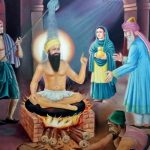
Trinity Sunday
Celebrated on the first Sunday after Pentecost, Trinity Sunday is a feast day celebrated by Christians all over the world. The purpose of this holiday is to honor the doctrine of the Trinity – which is God, the Father; Jesus, the Son; and the Holy Spirit.
All of which are separate entities in themselves but are also one and the same entity. This is also known as the Christian Godhead, as God incarnate in one person.
History of Trinity Sunday
Trinity Sunday was officially instituted in the 9th century by Pope Gregory IX. However, it had been celebrated as a tradition for hundreds of years before 828 CE, as evidenced by the adoption of the Trinitarian baptismal formula in early liturgies.
Most of these celebrations of this holiday were done on the local level by churches and dioceses, and it wasn’t celebrated with a widely adopted feast. That changed in 1334 when Pope John XXII established it as a feast day to be universally observed by all Christians in the Western Church.
Trinity Sunday Customs & Traditions
Trinity Sunday is a day for Christians in the U.S. and the world to honor the belief in an eternal God that consists of the Father, Son, and Holy Ghost. Many churches hold special services or prayers on this day. In some churches, the Athanasian Creed is recited. Other events that might be held on this day include concerts, Trinity Sunday awards, special meals, and social events.
In some Western churches, white is the liturgical color chosen for Trinity Sunday. This color may be combined with images of the Holy Trinity, which depicts the three elements of God as one. Sometimes, a triangle formed by overlapping loops or oval rings is used as a depiction of the Trinity.
Often, a crown is used as the symbol of the Father, a lamb as the one for Jesus, and a dove as a symbol for the Holy Spirit. In Eastern Orthodox churches, Pentecost Sunday is also called Trinity Sunday. The Monday that follows this Sunday is then called the Monday of the Holy Spirit, and the Tuesday after that is called the Third Day of the Trinity. In some of these Eastern churches, green is usually a prominent color.








